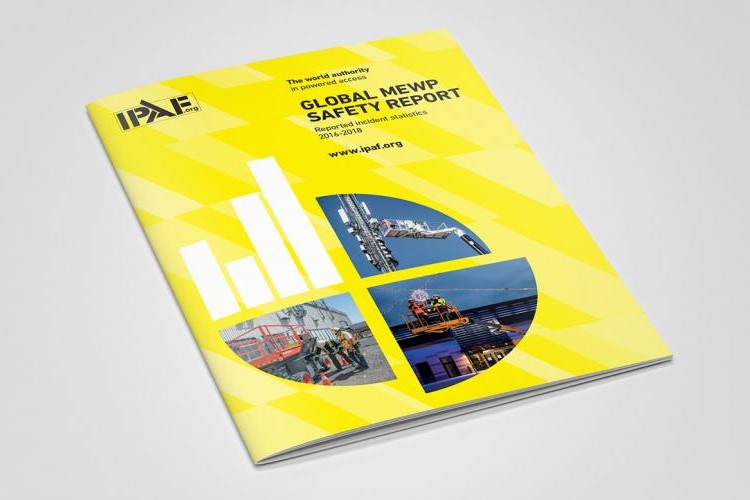The safety analysis finds that accidents are less likely in controlled locations such as construction sites, commercial or rental premises.
IPAF’s Global MEWP Safety Report 2016-2018 presents key findings from the federation’s analysis of accident statistics gathered through its worldwide accident reporting project, which covers incidents in 25 countries.
Accidents on construction sites account for the joint highest average number per year. However, MEWPs are used much more widely in construction than in other sectors and locations and accidents are proportionally less likely to occur on a controlled site than in a remote location or a public area, such as alongside a road.
As well as the increased proportional risk of an accident occurring when working away from controlled sites, the new report identifies recurring underlying causes of incidents involving MEWPs. It categorises them as falls from the platform, electrocutions, entrapments, MEWP tip-overs and MEWPs being struck by another vehicle. The findings are in linke with previous years’ fatal accident analysis and demonstrate yet again that the industry should focus on ways to reduce underlying factors common to these types of incident, said IPAF.
Richard Whiting, IPAF’s general market manager for UK & Ireland, said: “With this report there’s a new methodology to much of the analysis and the way the findings are presented, plus the report is interspersed with key recommendations to mitigate common risk factors. We’ve worked hard along with a dedicated group of IPAF members to analyse, interpret and present the data in a new way, to assist the wider industry to stay safe.
.png)
“One key change is that, rather than comparing a full year’s accident data to previous years, the most recent three full years of available data have been combined to produce an aggregate and average number of incidents – combining data into a larger overall set allows trends over time to be more readily identified.”
Other indications include: the industries in which fatal accidents occur most frequently are forestry and construction, with maintenance and electrical service sectors third and fourth respectively. Both forestry and construction had an annual average of 19 reported fatalities, but usage of MEWPs in construction worldwide is far higher than in forestry, so the fatal accident rate in forestry is far higher than on a construction site.
Whiting added: “Renewed focus must be brought to bear to warn managers and operators of the relatively higher proportional risks of a major or fatal accident when not working on a controlled, segregated work site. IPAF’s Street Smart safety campaign already seeks to do this; we must look at how best to evolve this campaign to help reduce electrocutions or other accidents in forestry, for instance.”
IPAF chief executive Peter Douglas said: “MEWPs are still among the safest ways to conduct work at height. When unplanned incidents do occur, it is vital we capture that data and analyse the resulting statistics to see what trends are occurring and to influence IPAF’s technical guidance, adapt our training programme and inform our safety campaigns.
“We must work with our members and all industry stakeholders to improve incident reporting. It’s vital that all incidents including minor mishaps and near misses are logged; this helps identify heightened risk and mitigate underlying factors to reduce the number of major accidents or fatalities that do occur using the knowledge gained.”
Got a story? Email news@theconstructionindex.co.uk



